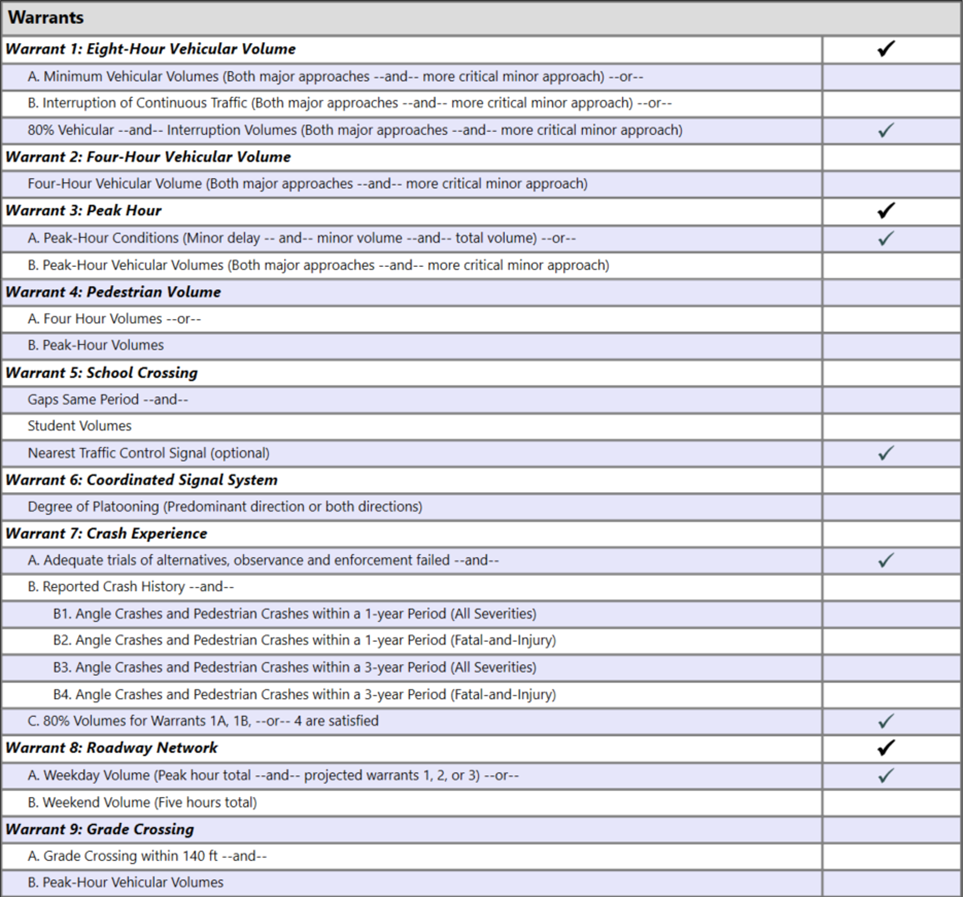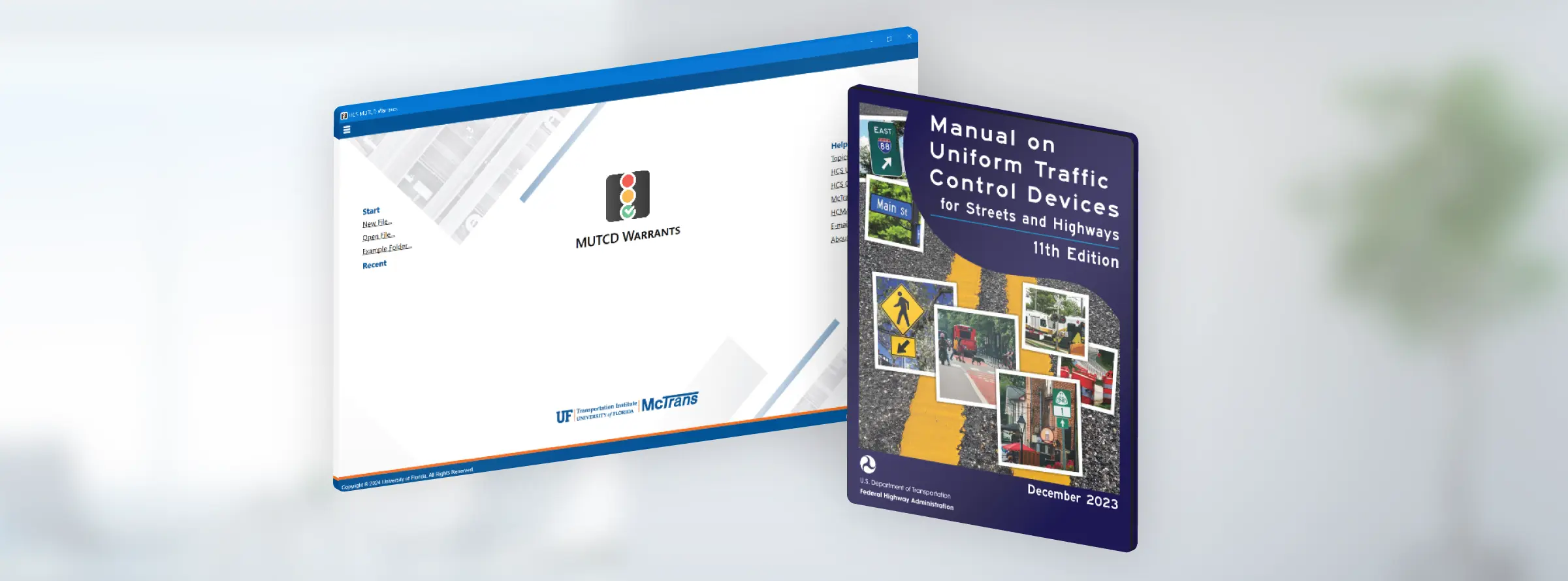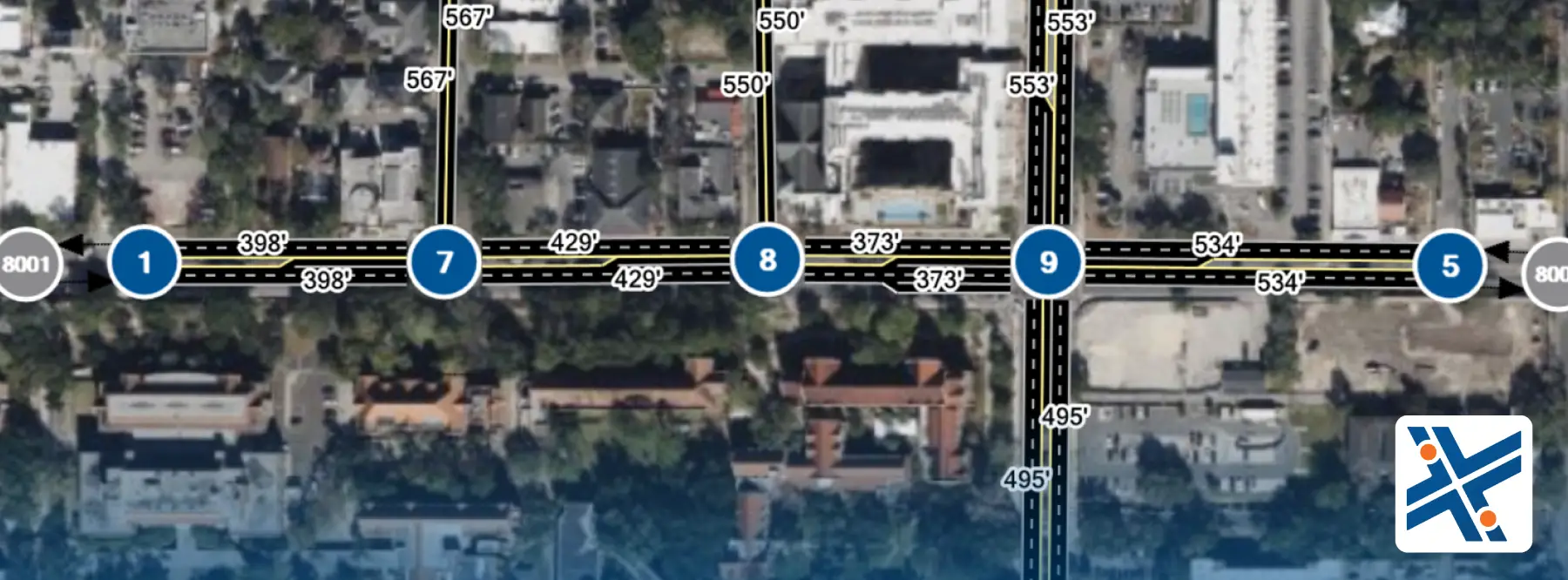Before installing a traffic control signal, a thorough study of traffic operations, pedestrian activity, physical road characteristics, and safety conditions is necessary, and mandated by many public agencies. The updated Warrants module in HCS 2025 automates the evaluation of these factors, providing a comprehensive check against all traffic signal warrants to determine if a signal is justified at a particular intersection.
The new HCS 2025 includes the latest Warrants updates from the Manual on Uniform Traffic Control Devices (MUTCD) 11th Edition, published in 2023. This article will provide an overview of the 9 warrants included in HCS 2025 to evaluate the need for traffic signal control, highlighting the major updates:
Warrant 1: Eight-Hour Vehicular Volume
This warrant is intended for intersections where traffic flow is the primary reason for installing traffic signal control. It considers 8 hours of traffic volume from both the minor and major approaches to the intersection.
Warrant 2: Four-Hour Vehicular Volume
Applied where intersecting traffic volumes are the principal reason for signal installation. This warrant uses specific criteria, especially on high-speed roads or in small communities, where the buildup of traffic occurs over a shorter period.
Warrant 3: Peak Hour
This warrant is applied in situations where the minor-street traffic experiences undue delays during peak hours. It evaluates whether 1-hour of traffic volume exceeds certain thresholds.
Warrant 4: Pedestrian Volume
This warrant applies when the traffic volume on a major street is so heavy that pedestrians experience significant delays in crossing. It evaluates both vehicular traffic and pedestrian crossings on the major street.
Warrant 5: School Crossing
This warrant applies when schoolchildren crossing a major street is the primary reason for considering the installation of a traffic control signal. It evaluates the number of schoolchildren and the available gaps in traffic during the highest crossing hour.
Warrant 6: Coordinated Signal System
It is applied when it is intended to ensure that signals are coordinated to improve traffic flow and reduce stops along a corridor.
Warrant 7: Crash Experience
This warrant applies when the frequency and severity of crashes are the primary reasons for installing a traffic control signal.
Warrant 8: Roadway Network
This warrant applies when a traffic signal can help encourage the concentration and organization of traffic flow within a roadway network. It considers the strategic importance of the intersection in the overall road network to enhance traffic management.
Warrant 9: Intersection Near a Grade Crossing
This warrant applies to intersections near a grade crossing, where one approach is controlled by a STOP or YIELD sign at a highway-highway intersection. It evaluates both traffic volume and the physical characteristics of the roadway to determine the need for a signal installation.
After entering the intersection data, HCS 2025 generates a final report that provides an overview of the intersection characteristics and indicates which warrants are met. The formatted report simplifies the review process, making it easier for professionals to assess the need for a traffic signal, review and submit the traffic study. The next Figure shows an example of the check list provided in the software report.

Warrant 4 Pedestrians - new inputs in HCS




